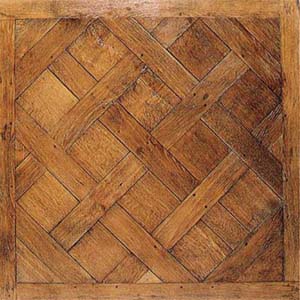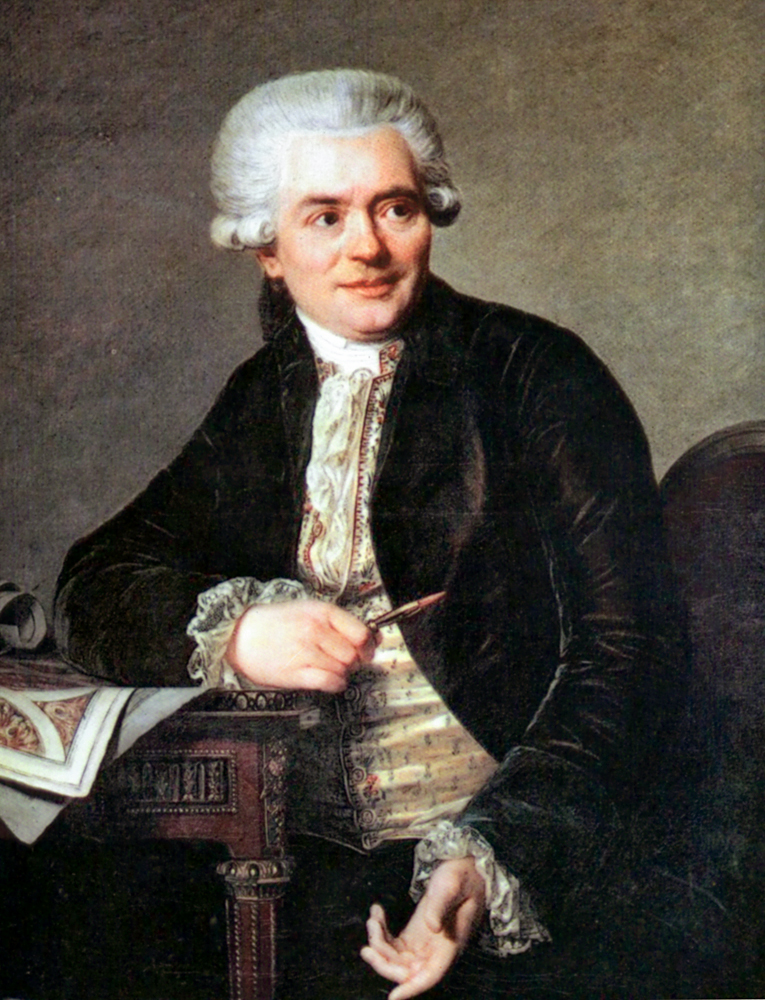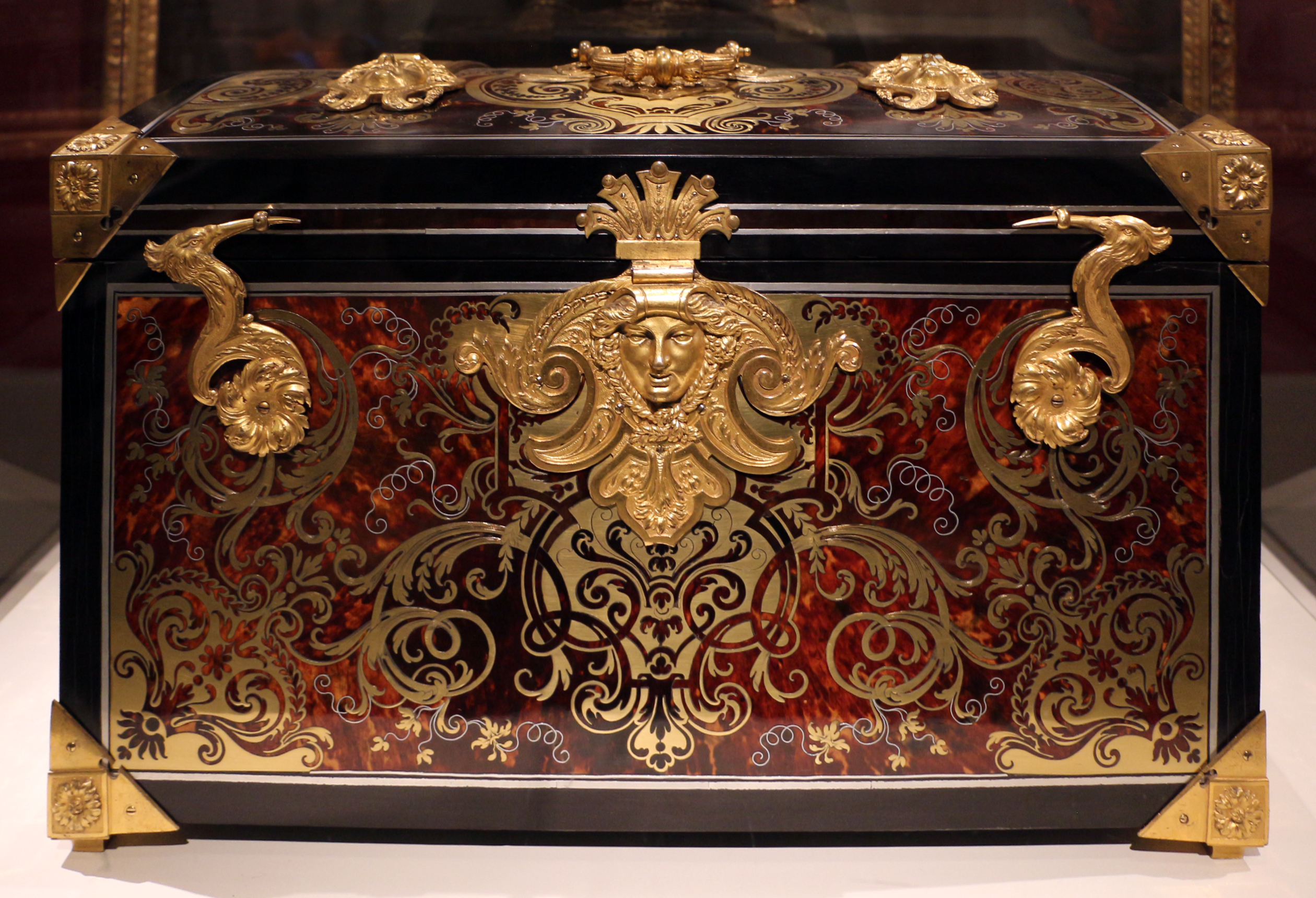|
Jean-François Oeben
Jean-François Oeben, or Johann Franz Oeben (9 October 1721 Heinsberg near Aachen – Paris 21 January 1763) was a German ébéniste (cabinetmaker) whose career was spent in Paris. He was the maternal grandfather of the painter Eugène Delacroix. Life and career Nothing is securely known about his training. He was in Paris by about 1740; from 1749 he lived in the Faubourg Saint-Antoine. During 1751 - 1754 he worked as ''compagnon'' at the workshop of Charles-Joseph Boulle, son of the great ''ébeniste'' of Louis XIV, André Charles Boulle, and then independently in premises in the Galleries of the Louvre sublet to him by Boulle. From 1754 he was granted premises, at first at the Manufacture des Gobelins, then, in 1756, in workshops and lodgings at the Arsenal. Though he had workshops under royal appointment, throughout his career the royal cabinet-maker, ''ébeniste du Roi'', was Gilles Joubert. Oeben worked for the aristocracy sometimes through intermediary '' marchands-mercie ... [...More Info...] [...Related Items...] OR: [Wikipedia] [Google] [Baidu] |
Heinsberg
Heinsberg (; li, Hinsberg ) is a town in North Rhine-Westphalia, Germany. It is the seat of the district Heinsberg. It is situated near the border with the Netherlands, on the river Wurm, approx. 20 km north-east of Sittard and 30 km south-west of Mönchengladbach. Geography Wassenberg is the town to the north of Heinsberg, Hückelhoven to the east, Waldfeucht and Gangelt to the west, and Geilenkirchen to the south. Two rivers flow through Heinsberg, the Wurm and the Rur. The Wurm flows into the Rur near to Rurkempen, a village of Heinsberg municipality. History Economy Due to its proximity to the Benelux countries, sufficient industrial park areas, low trade tax and good traffic connections, Heinsberg has good prerequisites for development. Companies include: * Enka Gmbh & Co KG * Hazet (tool company) * Sera Aquaristic Sights The city of Heinsberg has just a few ancient structures. Most of the city was destroyed in 1944 during World War II. The main sights are ... [...More Info...] [...Related Items...] OR: [Wikipedia] [Google] [Baidu] |
Château De Bellevue
The Château de Bellevue () was a small château built for Madame de Pompadour in 1750. It was constructed on a broad plateau in Meudon, above a slope overlooking the Seine to the east, but was demolished in 1823 and little remains. History At the instigation of Louis XV, Charles François Paul Le Normant de Tournehem, ''directeur général'' of the '' Bâtiments du Roi'', negotiated the purchase of the land from its various owners, located between Louis' châteaux at Meudon and Saint-Cloud. Ange-Jacques Gabriel, ''Premier architecte du Roi'', proposed the construction of a pleasure house to be named "Bellevue", referring to its views over the Seine. In 1749, Louis gave the land to Madame de Pompadour, who delegated the building to her architect, Jean Cailleteau (called "Lassurance the younger"), assisted in the gardens by Jean-Charles Garnier d'Isle. The work was quickly completed, despite the need for deep foundations. 800 workmen were employed, often with Louis i ... [...More Info...] [...Related Items...] OR: [Wikipedia] [Google] [Baidu] |
Martin Carlin
Martin Carlin (c. 1730–1785) was a Parisian ''ébéniste'' (cabinet-maker), born at Freiburg, who was received as Master ''Ébéniste'' at Paris on 30 July 1766. Renowned for his "graceful furniture mounted with Manufacture nationale de Sèvres, Sèvres porcelain", Carlin fed into the luxury market of eighteenth-century decorative arts, where porcelain-fitted furniture was considered among "the most exquisite furnishings" within the transitional and neoclassical styles. Carlin's furniture was popular amongst the main great dealers, including Poirier, Daguerre, and Darnault, who sold his furniture to Marie Antoinette and many amongst the social elite class. He died on 6 March 1785. Work life Carlin worked at first in the shop of Jean-François Oeben, whose sister he married. The marriage contract reveals that "Carlin was still a day-worker living on the quai des Célestins". Yet soon after Oeben's death, Carlin started to sell furniture to the marchands-merciers when setting up i ... [...More Info...] [...Related Items...] OR: [Wikipedia] [Google] [Baidu] |
Roger Vandercruse Lacroix
Roger Vandercruse Lacroix (1728–1799), often known as Roger Vandercruse, was a Parisian ''ébéniste'' whose highly refined furniture spans the rococo and the early neoclassical styles. According to Salverte, he "is counted among the great ebenistes of his generation (compta parmi les grands ebenistes de sa generation)." Roger Vandercruse Lacroix, like many outstanding Parisian cabinetmakers since the mid-seventeenth century, was of Low Countries stock, fully acclimatized in Paris, where he was part of a network of outstanding craftsmen: he was the son of a cabinet-maker in the Faubourg Saint-Antoine, and the brother of a clock-maker; in 1749 his sister married Jean-François Oeben, the great ''ébéniste'' and ''mechanicien'', whose workshop stock R.V.L.C.— as he stamped his pieces— finished after Oeben's death in 1763, including pieces designed for Oeben's patron, the marquise de Pompadour. His sister, Oeben's widow, then married the foreman Jean-Henri Riesener, roya ... [...More Info...] [...Related Items...] OR: [Wikipedia] [Google] [Baidu] |
Chiffonier
The term chiffonier, also chiffonnier, may refer to one of at least two types of furniture. Its name comes directly from a French piece of furniture, the ''chiffonier''. The French name, which comes from the French for a rag-picker, suggests that it was originally intended as a receptacle for odds and ends which had no place elsewhere.Chiffonier Oxford dictionaries British chiffonier In British usage, a chiffonier is similar to a , but differentiated by its smaller size and by the enclosure of the whole of the front by doors. It was one of the many curious developments of the mixed taste, at once cumbrous and b ...[...More Info...] [...Related Items...] OR: [Wikipedia] [Google] [Baidu] |
Parquetry
Parquet (; French for "a small compartment") is a geometric mosaic of wood pieces used for decorative effect in flooring. Parquet patterns are often entirely geometrical and angular—squares, triangles, lozenges—but may contain curves. The most popular parquet flooring pattern is herringbone. Etymology The word derives from the Old French ''parchet'' (the diminutive of ''parc''), literally meaning "''a small enclosed space''". History Large diagonal squares known as ''parquet de Versailles'' were introduced in 1684 as ''parquet de menuiserie'' ("woodwork parquet") to replace the marble flooring that required constant washing, which tended to rot the joists beneath the floors. Such ''parquets en losange'' were noted by the Swedish architect Daniel Cronström at Versailles and at the Grand Trianon in 1693. Materials Timber contrasting in color and grain, such as oak, walnut, cherry, lime, pine, maple etc. are sometimes employed, and in the more expensive kinds ... [...More Info...] [...Related Items...] OR: [Wikipedia] [Google] [Baidu] |
Marc-Pierre De Voyer De Paulmy, Comte D'Argenson
Marc-Pierre de Voyer de Paulmy, Comte d'Argenson (16 August 1696, Paris22 August 1764, Paris) was a French politician. Biography D'Argenson, a younger son of Marc-René de Voyer de Paulmy d'Argenson (1652–1721), was born on 16 August 1696. Following the family tradition he studied law and was councillor at the parlement of Paris. He succeeded his father as lieutenant-general of police in Paris, but held the post only five months (26 January to 30 June 1720). He then received the office of intendant of Tours, and resumed the lieutenancy of police in 1722. On 2 January 1724 d'Argenson was appointed councillor of state. He gained the confidence of the regent Philippe, Duke of Orleans, administering his fortune and living with his son until 1737. During this period he opened his salon to the philosophers Chaulieu, the Marquis of la Fare and Voltaire, and collaborated in the legislative labours of the chancellor d'Aguesseau. In March 1737 d'Argenson was appointed director of the ... [...More Info...] [...Related Items...] OR: [Wikipedia] [Google] [Baidu] |
Museu Calouste Gulbenkian
The Calouste Gulbenkian Museum houses one of the world's most important private art collections. It includes works from Ancient Egypt to the early 20th century, spanning the arts of the Islamic World, China and Japan, as well as the French decorative arts, Impressionist painting and the jewellery of René Lalique. Collection The permanent exhibition and galleries are distributed chronologically and in geographical order to create two independent circuits within the overall tour. The first circuit highlights Greco-Roman art from classical antiquity, as well as art from the ancient Near East and the Nile Valley. Among the artworks are ancient Egyptian, Mesopotamian, Persian, and Armenian pieces, as well as Persian art from the Islamic period. The second circuit includes European art, with sections dedicated to the art of the book, sculpture, painting and the decorative arts, particularly 18th century French art and the work of René Lalique. In this circuit, a wide-rangin ... [...More Info...] [...Related Items...] OR: [Wikipedia] [Google] [Baidu] |
Jean Henri Riesener
Jean-Henri Riesener (german: Johann Heinrich Riesener; 4 July 1734 – 6 January 1806) was a famous German ''ébéniste'' (cabinetmaker), working in Paris, whose work exemplified the early neoclassical "Louis XVI style". Life and career Riesener was born in Gladbeck, Westphalia, Germany. He moved to Paris, where he apprenticed soon after 1754 with Jean-François Oeben, whose widow he married; he was received master ''ébéniste'' in January 1768. The following year, he began supplying furniture for the Crown and in July 1774 formally became ''ébéniste ordinaire du roi'', "the greatest Parisian ''ébéniste'' of the Louis XVI period." Riesener was responsible for some of the richest examples of furniture in the Louis XVI style, as the French court embarked on furnishing commissions on a luxurious scale that had not been seen since the time of Louis XIV: between 1774 and 1784, he received on average commissions amounting to 100,000 livres per annum.He and David Roentgen were M ... [...More Info...] [...Related Items...] OR: [Wikipedia] [Google] [Baidu] |
Louis XV Of France
Louis XV (15 February 1710 – 10 May 1774), known as Louis the Beloved (french: le Bien-Aimé), was King of France from 1 September 1715 until his death in 1774. He succeeded his great-grandfather Louis XIV at the age of five. Until he reached maturity (then defined as his 13th birthday) on 15 February 1723, the kingdom was ruled by his grand-uncle Philippe II, Duke of Orléans, as Regent of France. Cardinal Fleury was chief minister from 1726 until his death in 1743, at which time the king took sole control of the kingdom. His reign of almost 59 years (from 1715 to 1774) was the second longest in the history of France, exceeded only by his predecessor, Louis XIV, who had ruled for 72 years (from 1643 to 1715). In 1748, Louis returned the Austrian Netherlands, won at the Battle of Fontenoy of 1745. He ceded New France in North America to Great Britain and Spain at the conclusion of the disastrous Seven Years' War in 1763. He incorporated the territories of the Duchy of L ... [...More Info...] [...Related Items...] OR: [Wikipedia] [Google] [Baidu] |
Bureau Du Roi
The ''Bureau du Roi'' (, ''the King's desk''), also known as Louis XV's roll-top desk (french: Secrétaire à cylindre de Louis XV), is the richly ornamented royal cylinder desk which was constructed at the end of Louis XV's reign, and is now again in the Palace of Versailles. History The ''Bureau du Roi'' was probably started in 1760, when the commission was formally announced. Its first designer was Jean-François Oeben, the master cabinet maker of the royal arsenal. The first step in its construction was the fabrication of an extremely detailed miniature model in wax. The full scale desk was finished in 1769 by his successor, Jean Henri Riesener, who had married Oeben's widow. Made for the new ''Cabinet du Roi'' at the Palace of Versailles, it was transferred to the Louvre Museum in Paris after the French Revolution, but has been returned to the Palace of Versailles in the 20th century where it stands again in the room where it was standing before the Revolution, i.e. the ''Ca ... [...More Info...] [...Related Items...] OR: [Wikipedia] [Google] [Baidu] |
Marquetry
Marquetry (also spelled as marqueterie; from the French ''marqueter'', to variegate) is the art and craft of applying pieces of veneer to a structure to form decorative patterns, designs or pictures. The technique may be applied to case furniture or even seat furniture, to decorative small objects with smooth, veneerable surfaces or to freestanding pictorial panels appreciated in their own right. Marquetry differs from the more ancient craft of inlay, or intarsia, in which a solid body of one material is cut out to receive sections of another to form the surface pattern. The word derives from a Middle French word meaning "inlaid work". Materials The veneers used are primarily woods, but may include bone, ivory, turtle-shell (conventionally called " tortoiseshell"), mother-of-pearl, pewter, brass or fine metals. Marquetry using colored straw was a specialty of some European spa resorts from the end of the 18th century. Many exotic woods as well as common European variet ... [...More Info...] [...Related Items...] OR: [Wikipedia] [Google] [Baidu] |


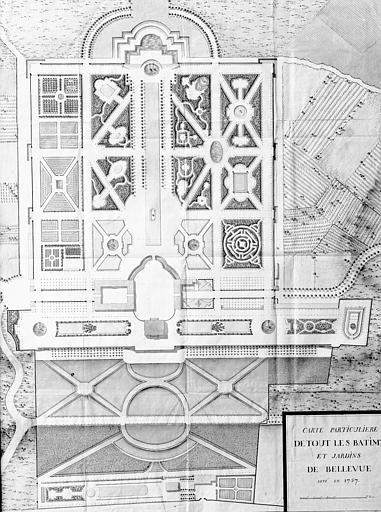
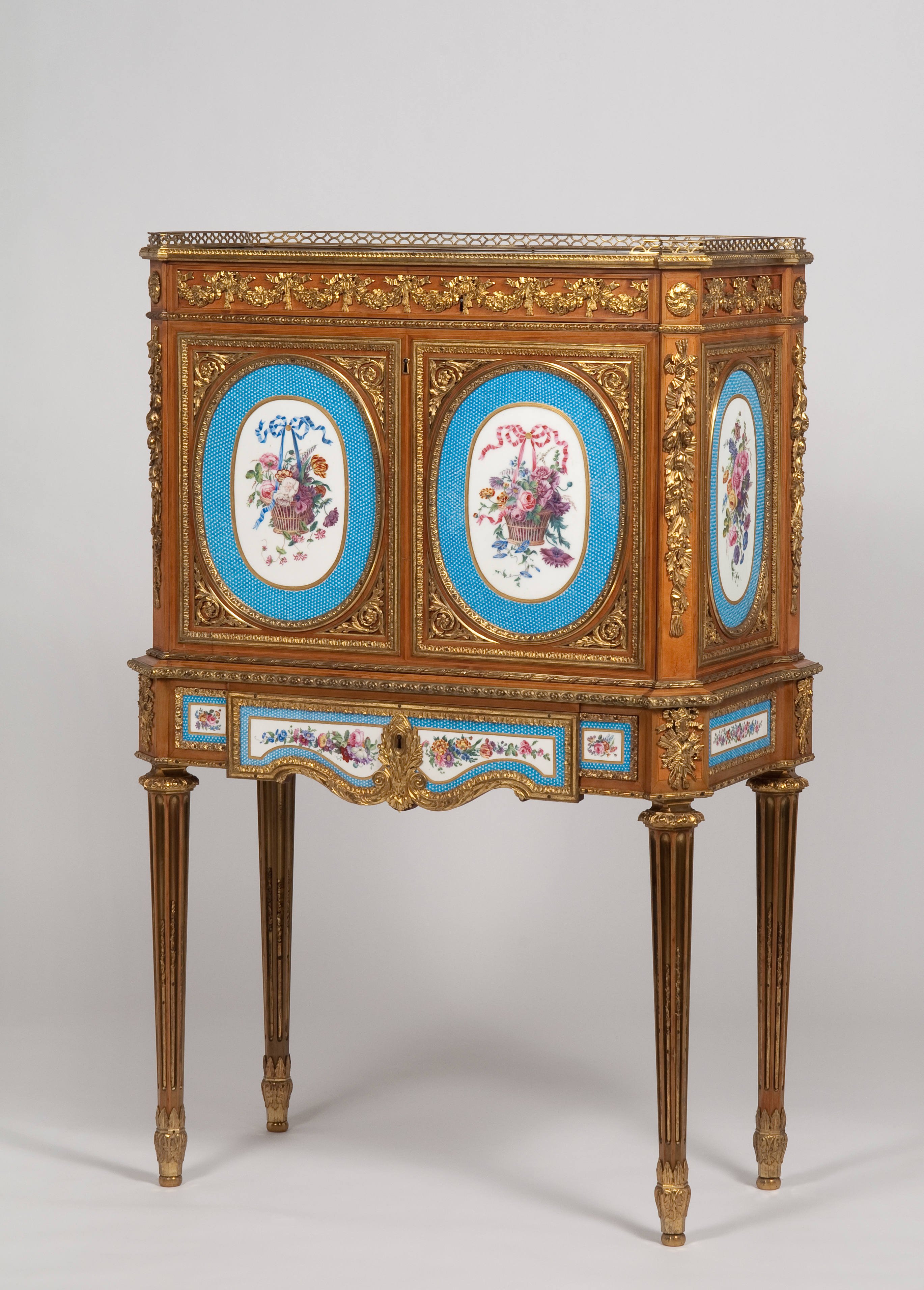
.jpg)
